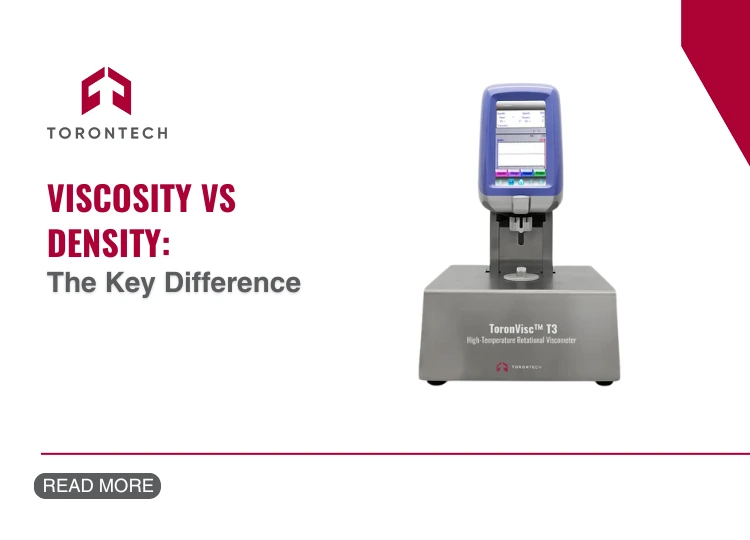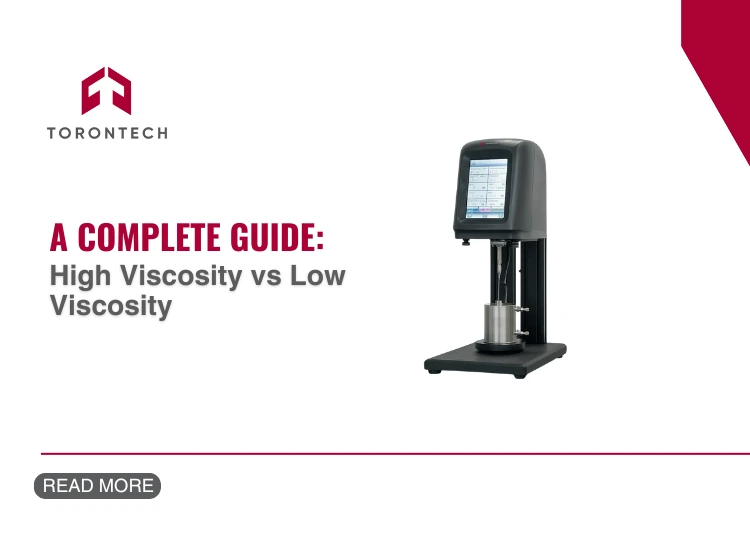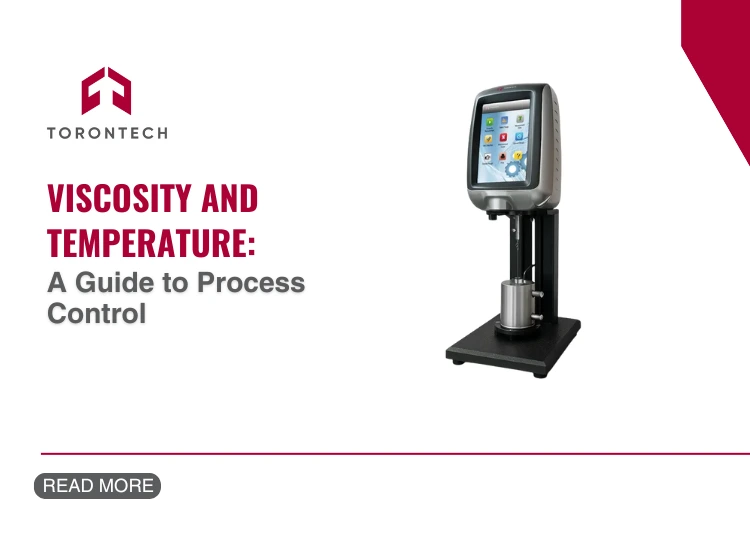If your operations involve handling liquids, you have to know exactly how they behave.
As a long-time supplier, we at Torontech have seen that relying on guesswork is a recipe for operational headaches. Getting a solid grip on your fluid properties isn’t just a minor detail; a clear understanding of viscosity vs density is central to the entire process.
Viscosity vs. Density
So what truly separates these two when we look at density vs viscosity? The difference is fundamental, and it’s a distinction every plant manager needs to master.
First, let’s talk about density.
The most straightforward way we can describe it is how much mass is concentrated in a given volume. It’s the reason a container of industrial coating is substantially heavier than a same-sized container of water.
In a plant setting, managing density is a primary concern for anyone needing to achieve accurate fills by weight. This property is a critical factor in the broader density vs viscosity equation.
Then you have viscosity, which is a completely different property. This is all about a liquid’s internal resistance to flow. You can think of it as its “thickness.” A high-viscosity fluid, like a heavy gear oil, shows significant resistance and moves slowly.
We often find that viscosity is the most critical property relating to a product’s application performance and the other half of the viscosity vs density challenge.
Related article: High Viscosity vs Low Viscosity: A Complete Guide
Now, here is the critical point that causes the most issues. There is no inherent link between these two properties.
A fluid can be incredibly dense yet flow with ease. Conversely, you can have a low-density fluid that is extremely thick. We make it a point to stress this with our clients, because grasping this independence is key to understanding viscosity vs density. You must measure these two characteristics separately to have real control over your process.
You will also hear professionals discuss Dynamic and Kinematic Viscosity. The simple explanation is that dynamic viscosity is the direct measure of a fluid’s resistance to flow, while kinematic viscosity relates that resistance to its density, further highlighting the interplay of density vs viscosity.
How is a Fluid’s Flow Resistance Measured?
Given its importance, an accurate viscosity test is a non-negotiable step in quality control. The tool for this job is called a viscometer.
While a few types exist, we believe the most practical and reliable instrument for resolving the viscosity vs density measurement challenge in an industrial QC setting is the rotational viscometer.
These instruments, including our own ToronVisc™ series, function by measuring the force needed to rotate a spindle within the fluid. We specifically designed them for this kind of real-world factory condition, where you need a balance of speed, precision, and repeatability.
Helping clients choose the right tool for their specific fluid is a big part of what we do.
Why This Matters Across Industries
The consequences of properly managing the density vs viscosity dynamic are visible in every sector:
- Paints, Coatings, and Inks: A paint’s viscosity dictates the quality of its application. We’ve seen repeatedly how proper viscosity control prevents sags and ensures a smooth, uniform finish.
- Food and Beverage: The thickness of products like sauces or drink concentrates determines their texture and mouthfeel, where consistency is paramount.
- Petrochemicals and Lubricants: An oil’s viscosity is its most vital characteristic, creating a protective film that prevents metal-on-metal wear—a costly situation we help our clients avoid daily by providing tools to accurately assess this key property.
Control Viscosity vs. Density with Torontech
So, what does this all mean for your operation? The entire viscosity vs density topic comes down to control.
Density relates to mass, while viscosity relates to flow. We believe that recognizing the need to accurately measure viscosity with a capable instrument is your key to a more efficient production line, a more consistent product, and the prevention of costly setbacks. The core of the density vs viscosity challenge is knowing you can’t infer one from the other.
That’s where we can assist. We developed our ToronVisc™ line of digital rotational viscometers because we saw a need for precision instruments at a cost-effective price point. They deliver reliable, industry-standard results without straining your budget.
If you need absolute certainty that your fluid’s viscosity meets spec every single time, we can help. We encourage you to look at our selection of digital and cone-and-plate viscometers or contact our team to find the ideal solution for your process.
Need the Right Viscosity Measurement?
Explore cost-effective Torontech viscometers for precise, reliable results.
References
- Yadav, D. (2019). A Review on Effect of Viscosity on Liquids, Gases and Solid.
- Thressia, M. (2019). PENUNTUN PRATIKUM FISIKA – MERRY THRESSIA, S.Si, M.Si. https://doi.org/10.31227/osf.io/vsqc8
- (2020). Viscosity. Definitions. https://doi.org/10.1007/978-3-662-55771-6_300723
- Sablani, S., Rahman, M., Datta, A., & Mujumdar, A. (2006). Fluid Flow and Its Modeling Using Computational Fluid Dynamics. https://doi.org/10.1201/9781420015072.CH3
- Patel, A., Boersma, B., & Pecnik, R. (2016). The influence of near-wall density and viscosity gradients on turbulence in channel flows. Journal of Fluid Mechanics, 809, 793 – 820. https://doi.org/10.1017/jfm.2016.689
- Etrati, A. (2018). Displacement flow of miscible fluids with density and viscosity contrast. https://doi.org/10.14288/1.0371195
- Killie, R., & Grüner, V. (2024). An Overview of the Fundamental Differences in Performance Between Density-Based and Viscosity-Based Autonomous Inflow Control Technologies. Day 1 Wed, April 17, 2024. https://doi.org/10.2118/218451-ms
- Eberhard, U., Seybold, H., Floriancic, M., Bertsch, P., Jiménez‐Martínez, J., Andrade, J., & Holzner, M. (2019). Determination of the Effective Viscosity of Non-newtonian Fluids Flowing Through Porous Media. Frontiers in Physics. https://doi.org/10.3389/fphy.2019.00071
Frequently Asked Questions (FAQ)
2. What instrument is used to measure viscosity?
Viscosity is measured with a viscometer. For most industrial quality control, we find that rotational instruments, like the ones Torontech provides, offer the best combination of precision and practicality.
3. Are viscosity and density related?
There is no direct relationship. From our experience, this is a common point of confusion in the density vs viscosity discussion. A dense fluid can flow easily, while a less dense fluid can be very thick.
4. What is the difference between dynamic and kinematic viscosity?
Dynamic viscosity is the direct measurement of a fluid's resistance to flow. Kinematic viscosity is a related value that factors in the fluid's density.
5. Why is measuring viscosity so important for quality control?
From our standpoint, measuring viscosity is vital for QC because it ensures product consistency and performance. An incorrect viscosity value directly affects end-product quality and your company's reputation.








